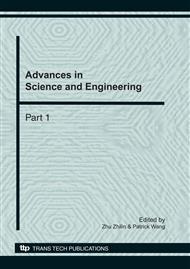p.537
p.543
p.549
p.554
p.560
p.566
p.570
p.577
p.584
A Novel Method for Fatigue Detection Based on Fuzzy Logic
Abstract:
The problem of fatigue is becoming one of the factors impacting on the working and studying people. Therefore, how to detect whether the people are tired simply and effectively is paid attention to by more and more researchers. A novel method of fatigue testing based on fuzzy logic and image processing is proposed in this paper. Firstly, positive map and side elevation are extracted through camera device. Then motion detection determined to locate human faces and the frequency of eyes opening and closing is derived by using image processing techniques. Finally the angle between the head and the shoulder is calculated combined with a representation of time function and a fatigue threshold is set up. All of these are determined to estimate the degree of fatigue. Experimental results show that, the method can quickly detect the degree of fatigue simply.
Info:
Periodical:
Pages:
560-565
Citation:
Online since:
November 2010
Authors:
Keywords:
Price:
Сopyright:
© 2011 Trans Tech Publications Ltd. All Rights Reserved
Share:
Citation:


